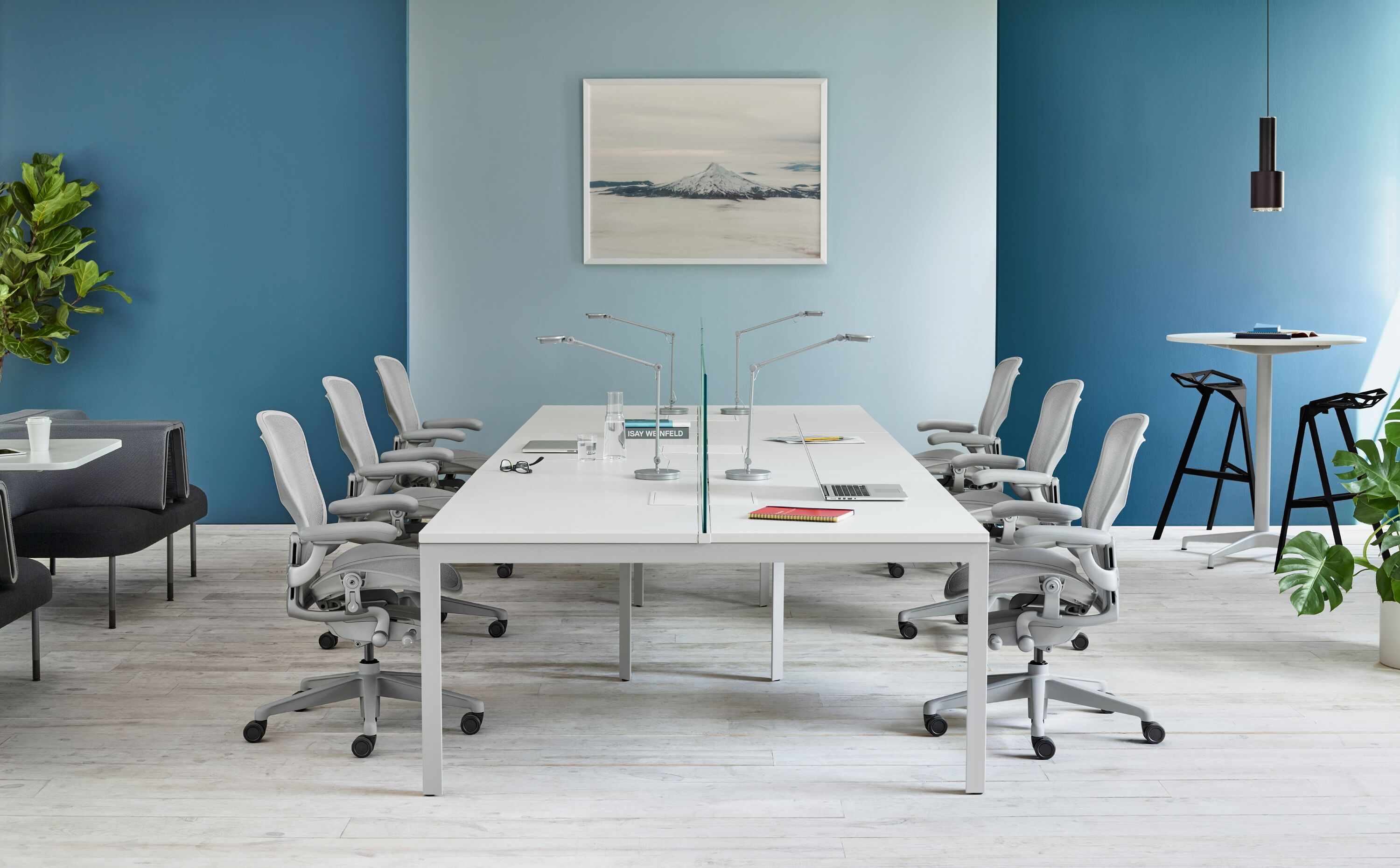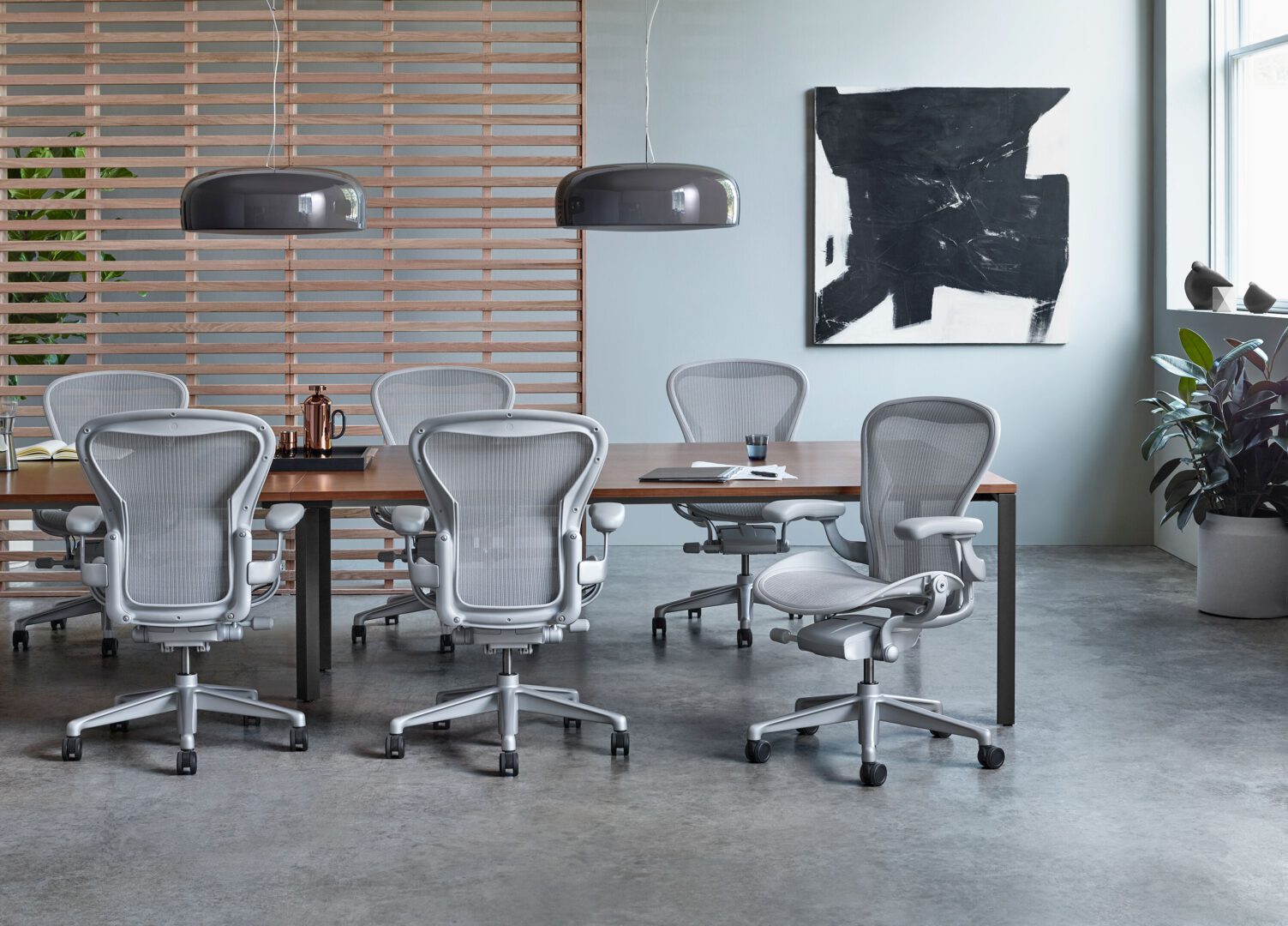ESG, sustainable development, care for future generations – these are hot topics which are very much familiar to the office equipment sector. How does MillerKnoll deal with them? We spoke about this with Ryan Anderson and Joseph White. Below follows another part of the conversation with the manufacturer’s representatives, which was published this year in an abbreviated version in ‘Salon Polityki’.
Last year, Herman Miller began using ocean-sourced plastic for its iconic Aeron chair. Why is sourcing raw materials from garbage so important?
Joseph White: This is one of our most important achievements in recent years – from a design, construction and production point of view. Our clients and investors expect us to be environmentally sustainable and want more than no negative impact. They expect positive change. As many as 98% of our clients from the contract market ask about environmental issues in business inquiries – so nearly all of them. What’s more, our research on consumer preferences shows that being socially responsible and having a positive impact on the environment are among the most important factors determining the choice of a given brand. So it matters, because we’re making a positive change in our world. And besides, consumers and investors expect it.
Working with NextWave Plastics, we want to recover some of the waste that is literally washed ashore. We are working more and more intensively to redirect this waste so that it does not end up on shore in the first place, but becomes one of our raw materials. On the one hand, we reduce the amount of waste, and on the other, we engage communities in the process of change and development. One of the things that I think is really interesting that consumers will never see is using this plastic to make crates in which we ship parts from place to place. These are reusable crates, so we don’t throw this material away. This allows us to actually reduce plastic. This is not just a symbolic project to put a gold star in our documentation. This is something we look at as part of our company processes.

Ryan Anderson: It took us years to start making components from recycled plastic. This is because our production processes are color specific and need to be strictly controlled. Customers do not want to see the same chairs with a large difference in gradients placed next to each other. It was a huge effort by our product development team to finally be able to use ocean plastic in our manufacturing processes. But it was worth the effort. In this way, we set the stage for many other things. We estimate that in the near future 15 million single-use plastic bottles will be included in the production of Aeron alone. We have always liked challenges in terms of material innovation.
There is a lot of talk these days about ‘end-to-end’ design and the need to consider what will happen to the product when it is no longer functional or useful. Do you adopt this approach?
J.W.: Let’s start with the fact that we are not a company that designs with quick product aging in mind. We don’t design so that our furniture becomes obsolete next season and the customer has to buy another one. We manufacture our models so that they are really durable, serve people for a long time and retain their market value. Aeron was one of the first office furniture pieces to prove to have value in the secondary market. We see that this trend is starting to gain momentum – the resale of various products, not only furniture. This is a phenomenon we hope will continue to develop.
We look closely at solutions such as minimal material design. The Aeron chair has recently been redesigned to reduce the amount of material needed to make it. I think that about 1 kilogram of material was “removed” from the final product, but taking this criterion into account, it is also worth paying attention to our Sayl and Cosm armchairs. These products require the use of very small amounts of material compared to other armchairs available on the market.
Another important issue is designing taking into account the ease of repair or disassembly. We do not glue elements of our furniture. They are designed in such a way that they can be dismantled, and therefore also recycled when the furniture ends its life cycle as a product, or allowing for replacing a broken part with a new one.


